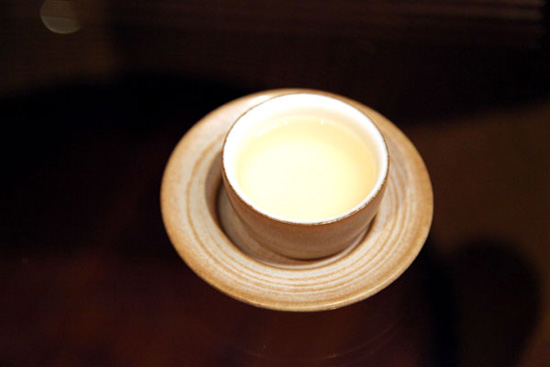
 |
| (China Daily/Fan Zhen) |
The village it was named after is near the scenic city of Hangzhou, and is famous for its springs, as well as its clement weather. The best season for harvesting the tea coincides with Qingming Festival in early April, when the villagers gather and stir-fry the leaves. Two weeks later, the most coveted of teas is ready for market.
For Dragon Well tea, the best way to tell quality is to use your eyes. The dried leaves should be shaped like withered orchid petals, with two leaves hugging the precious shoot tip.
The characteristic fresh clean taste of Dragon Well tea lies within the tip. The leaves must be "smooth in straight planes", and the color of unpolished rice.
The best Dragon Well green tea is never really green, so do not be fooled by that.
Once you have laid your hands on the genuine leaves, take care to prepare them well. Prepare hot water of 80 C, a glass tea bowl with a wide opening and a porcelain tea pot. Carefully place the leaves in the teapot, pour in the water quickly and drain the teacup just as quickly.
There will be a whiff or orchid, the fragrance of fried beans and a smoothness that clears the throat as it goes down.
In tea jargon, this characteristic is "clean and fresh", a sensation that comes from the amino acid-infused tea leaves, natural elements that are good for body and skin. Green tea works to guard the body against carcinogens and the leaves contain antioxidants, or anti-aging agents that skin care products love to extract and promote.
The World Health Organization recognizes that green tea is good for health.
The Chinese have known the benefits of Dragon Well green tea for more than 1,000 years now and started drinking it in the Tang Dynasty (AD 618-907), named it in the Song Dynasty (960-1279) and made it an emperor's own in the Qing Dynasty.
Zhou Yutong is tea sommelier at the Four Seasons Beijing.

















 Sea burial held in China's Tianjin before Qingming
Sea burial held in China's Tianjin before Qingming


![]()
